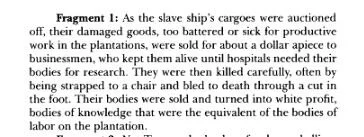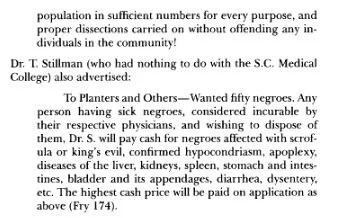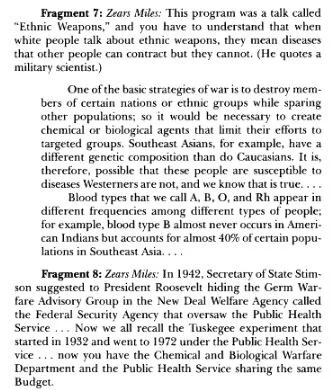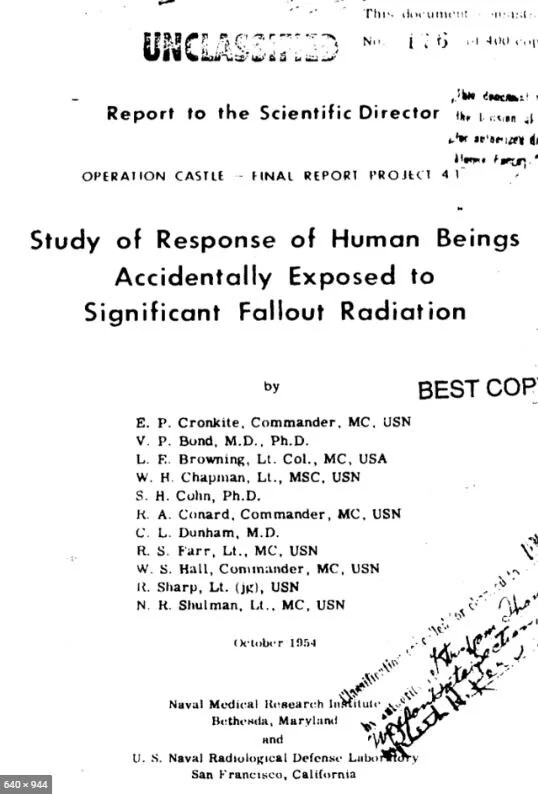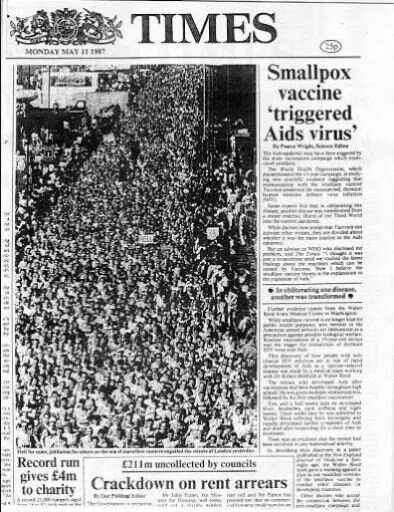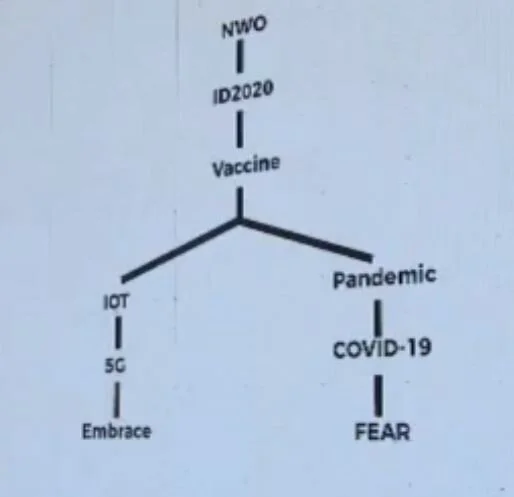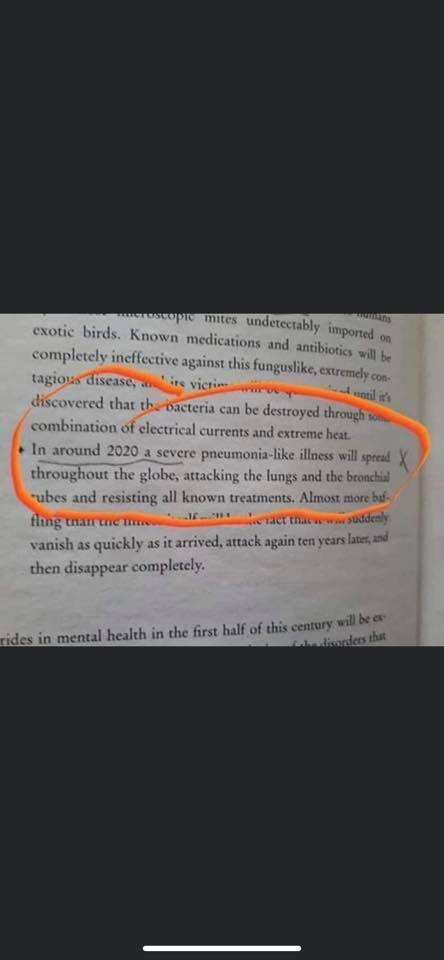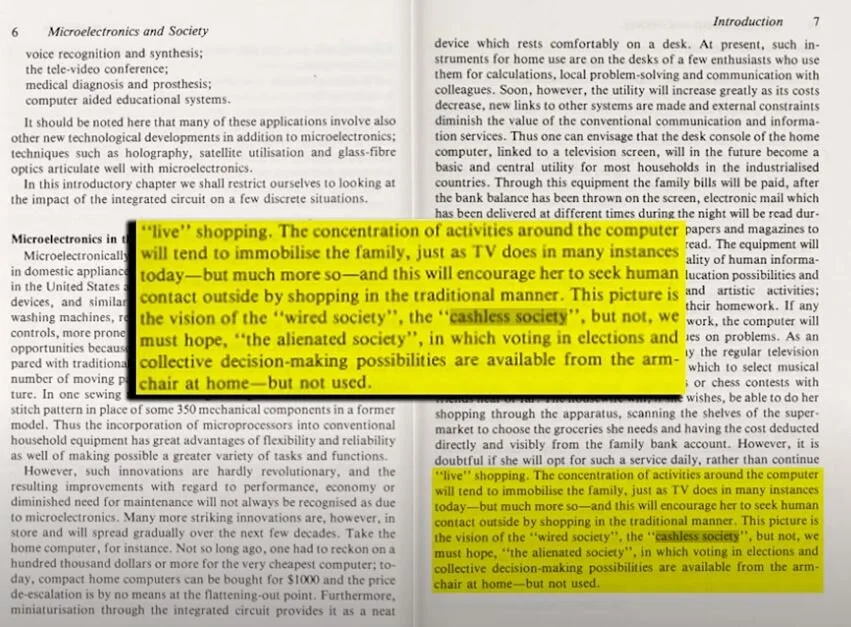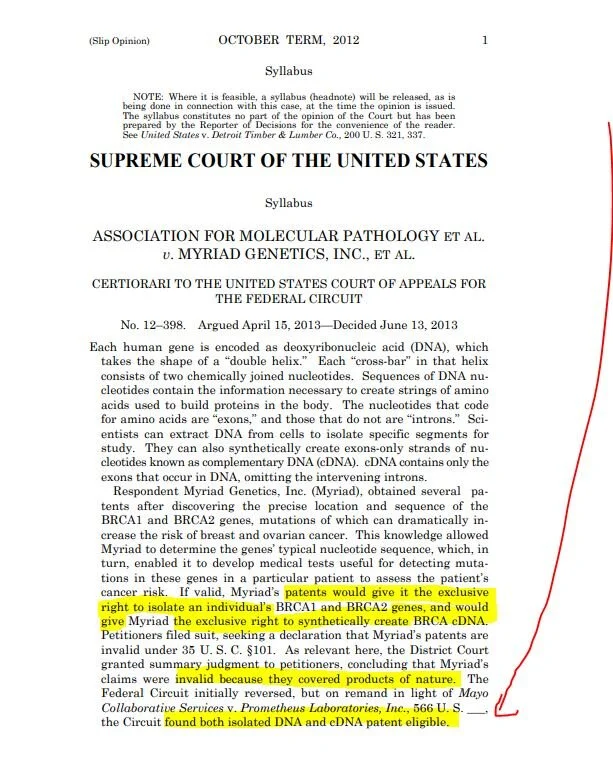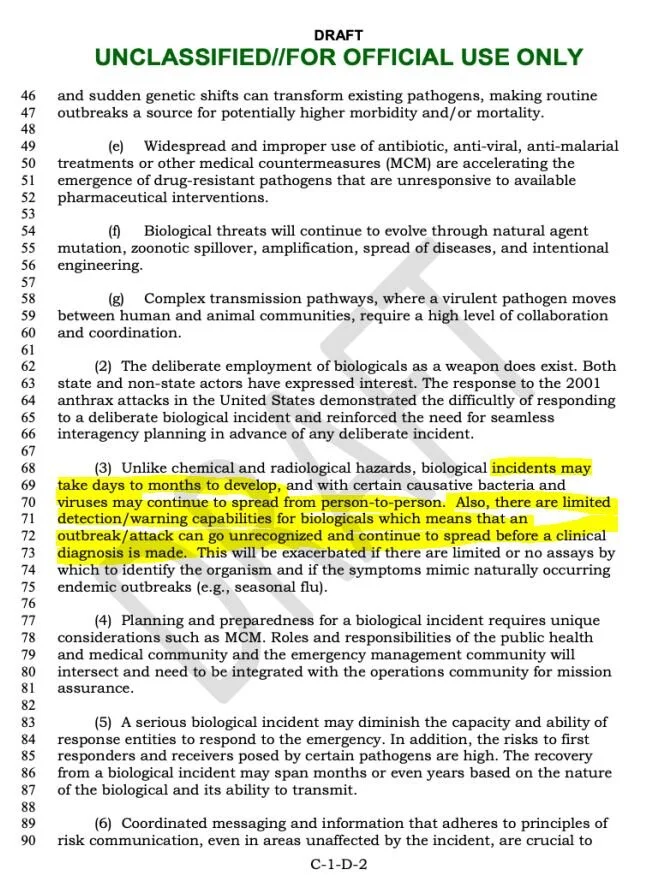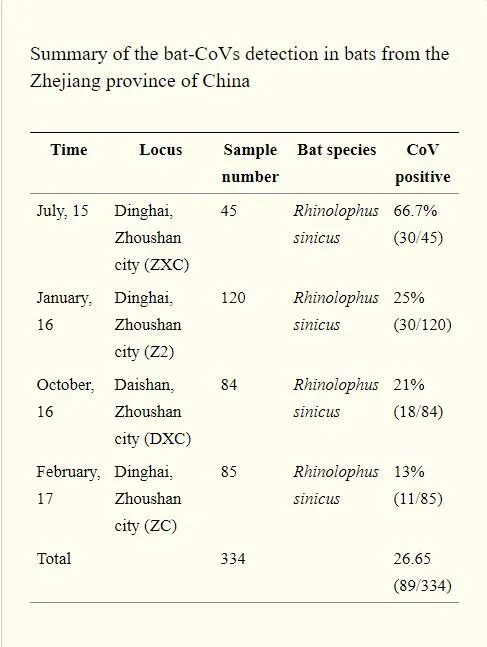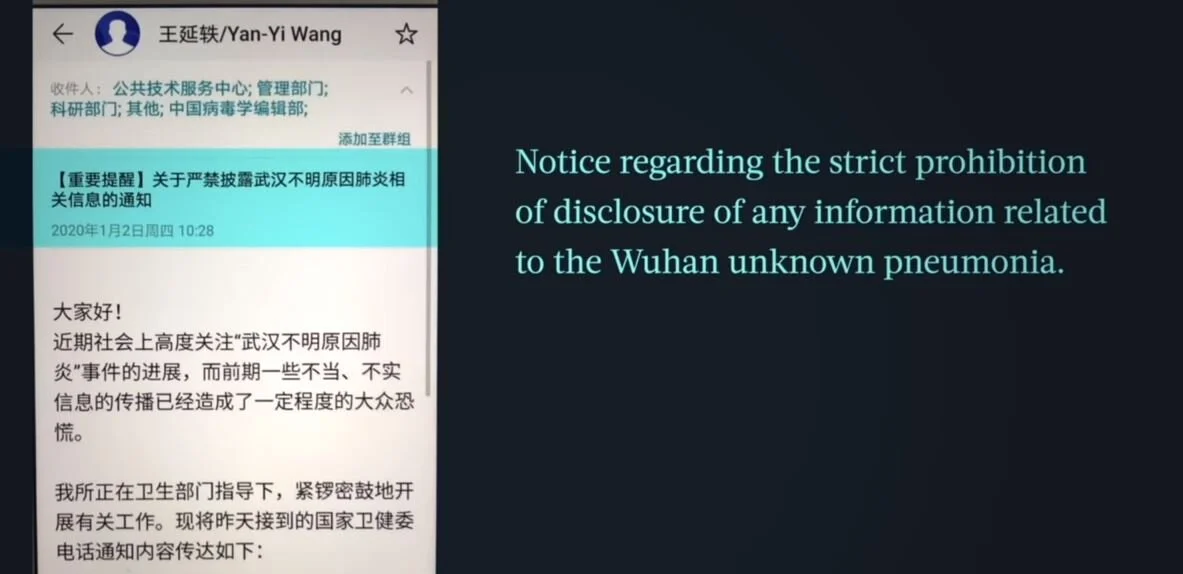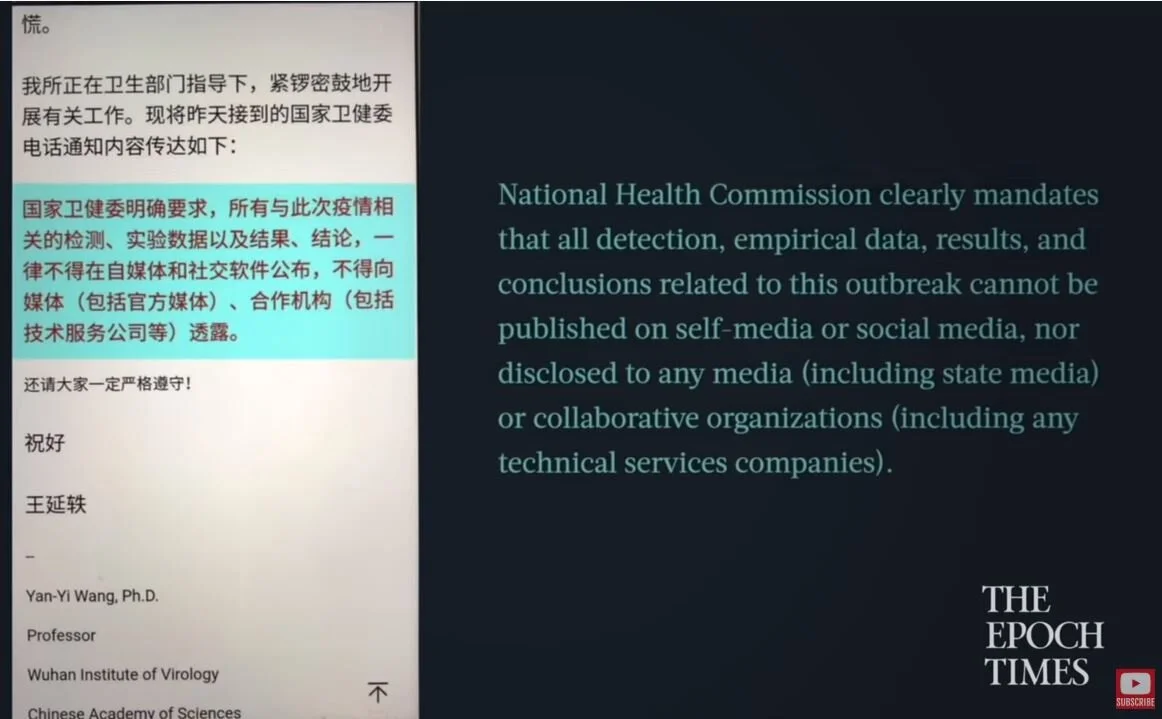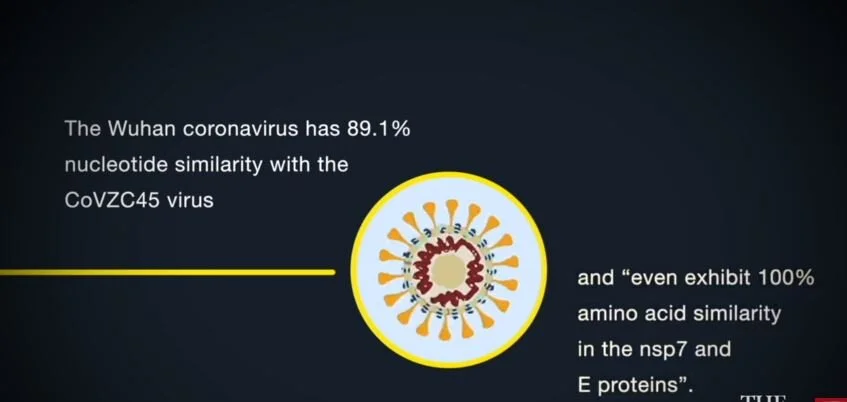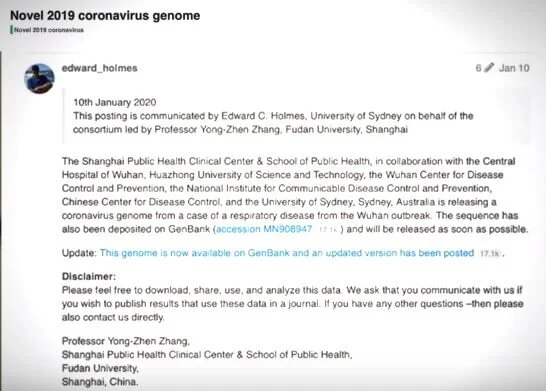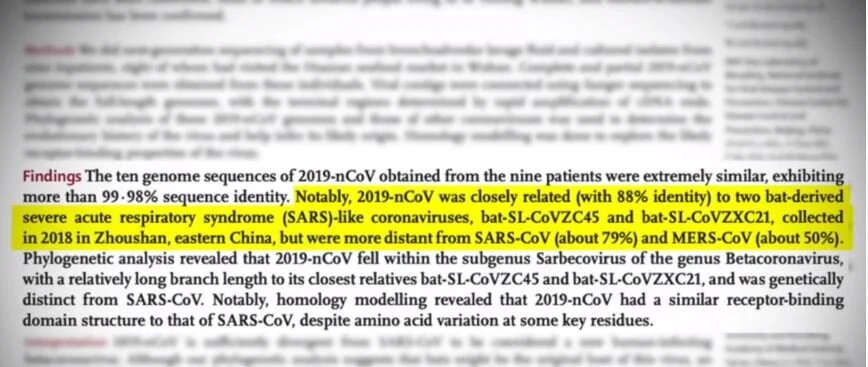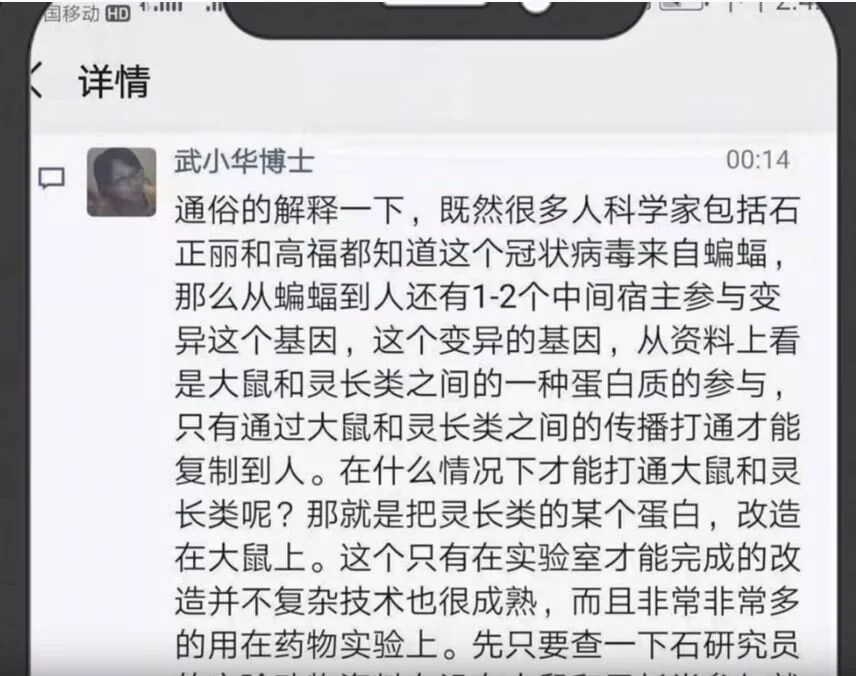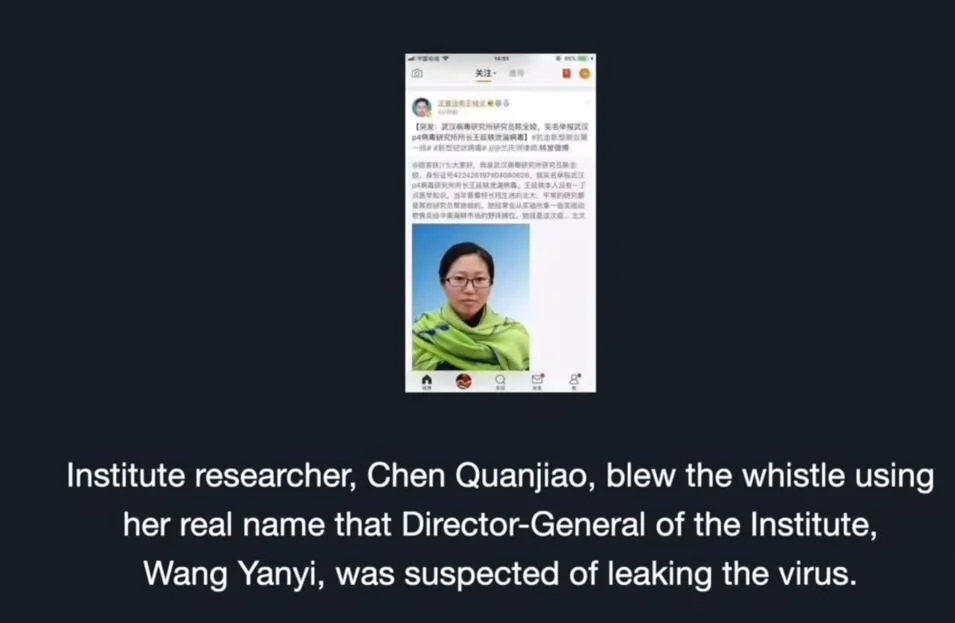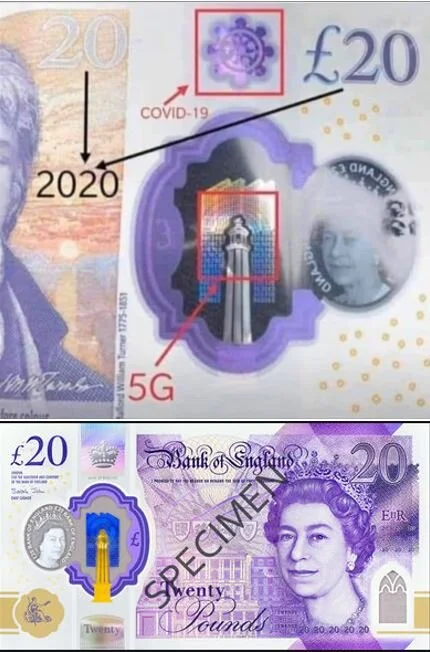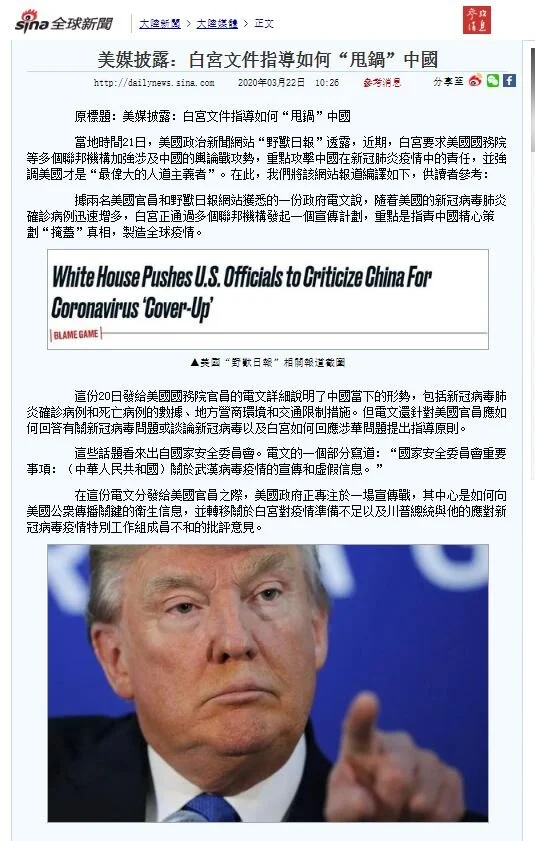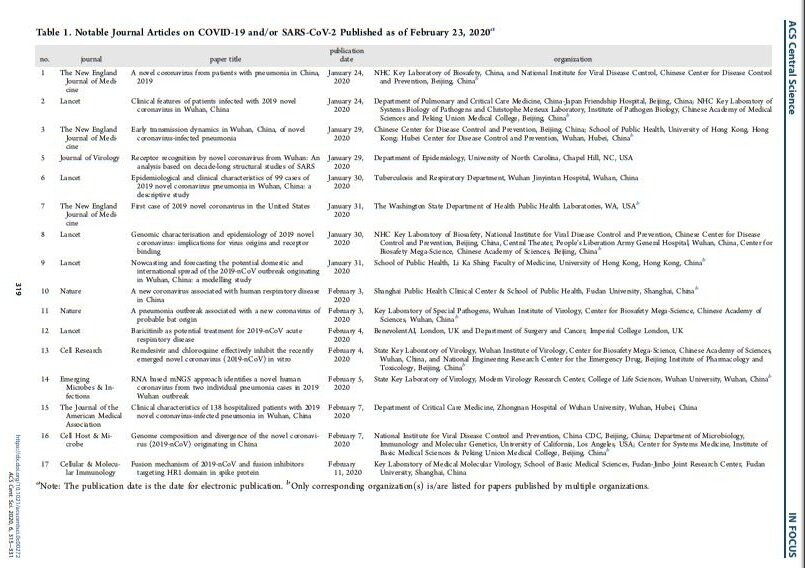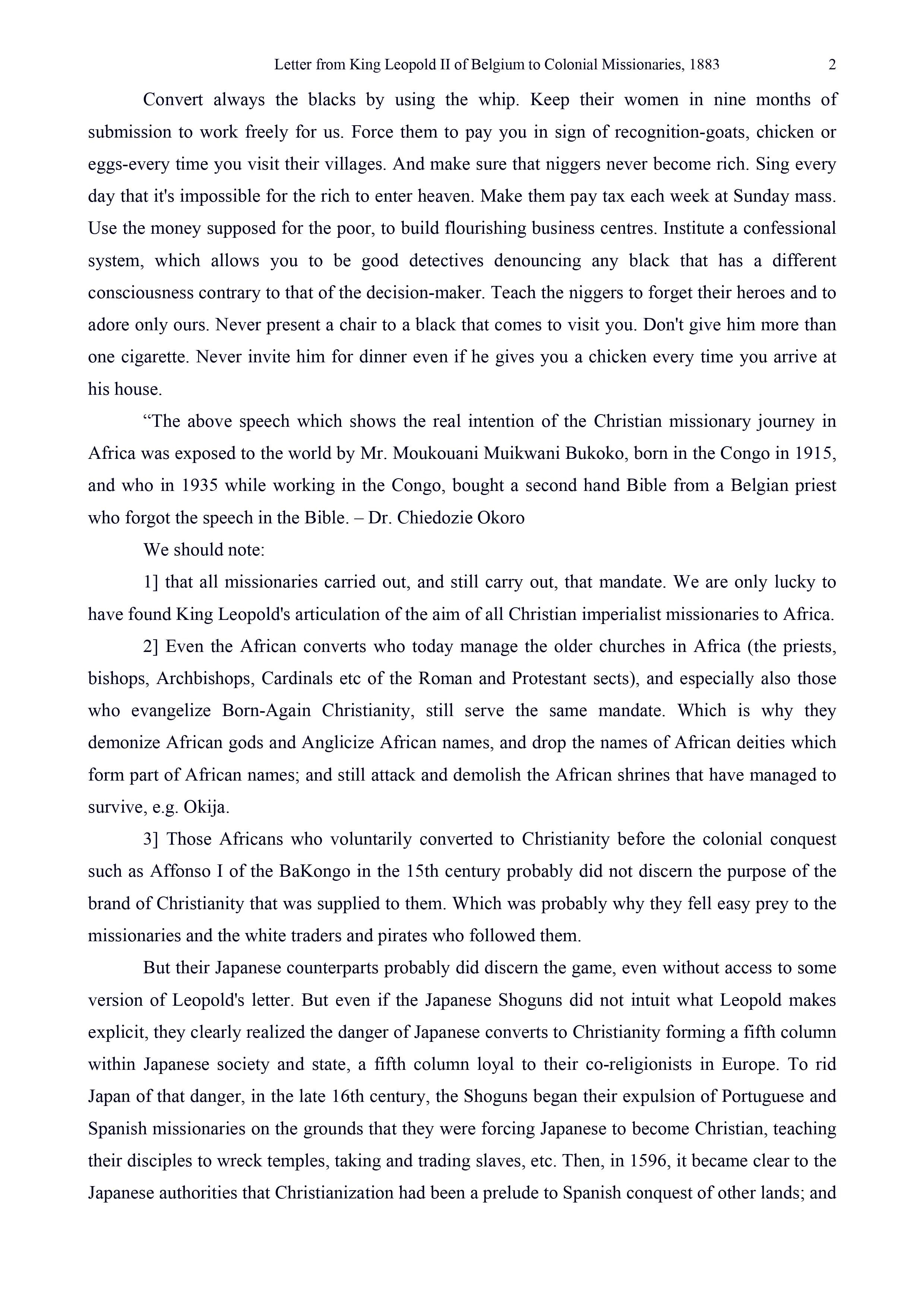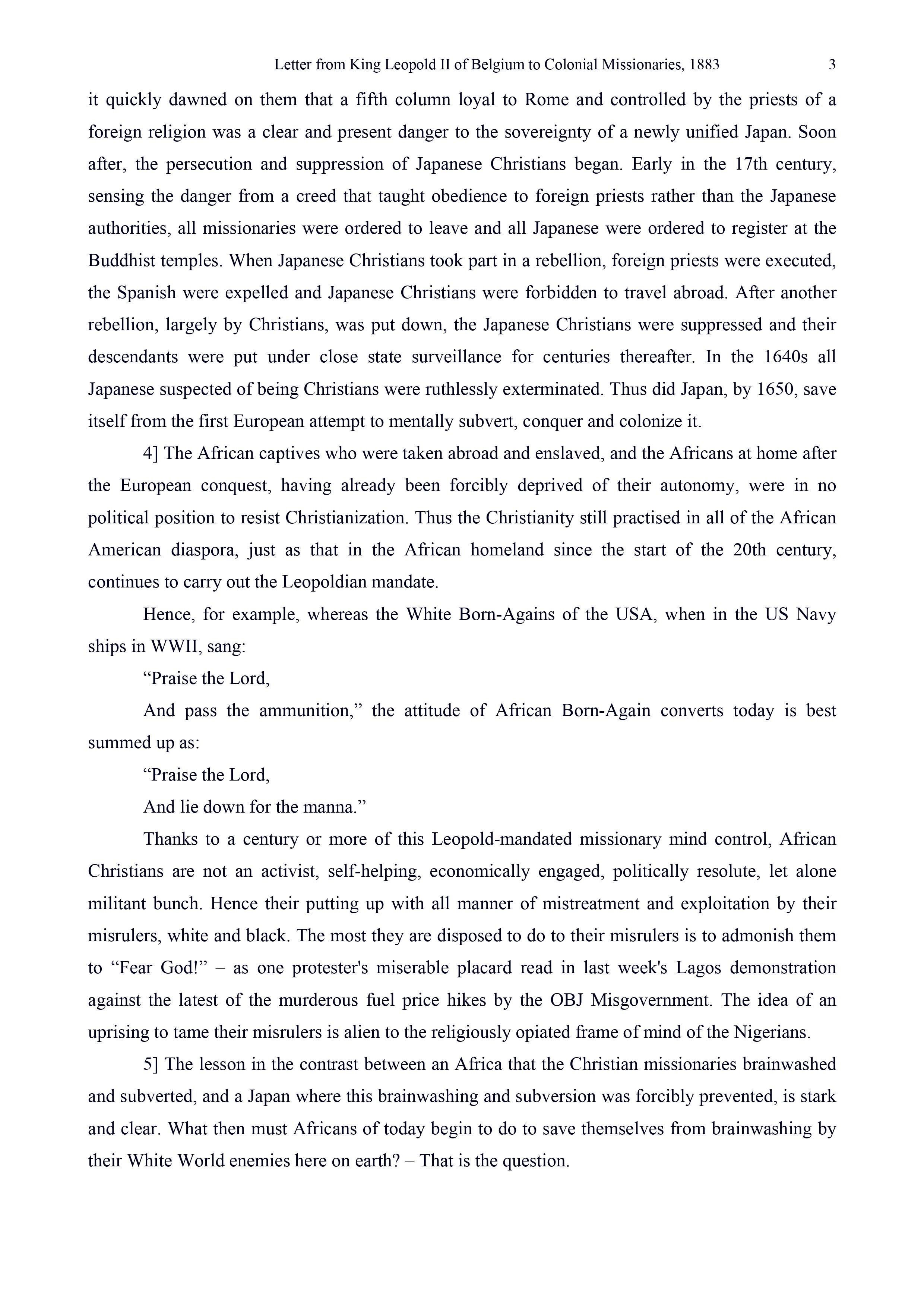“The first Dutch slave ship, Jesus, reached Jamestown in 1619. During the middle passage - the term used for the voyage of the slave ship -many members of its African cargo jumped overboard and died in a vain attempt to swim back home. Those Africans who arrived in the New World brought with them their culture. . . . Slave ships became the incubators of slave unity across the cultural lines which divided them in Africa. The shared experience erased barriers between one group and another and fostered resistance thousands of miles before the land of enslavement appeared on the horizon. “
- Sterling Johnson, Black Globalism: The International Politics of a Non-state Nation
I am writing this article because of the tragic, lamentable state of division and hostility that exists within the “black” community, both in and outside of Africa, and specifically in the United States of America, recently intensified because of the #ADOS movement. The massive amount of non-constructive conversation and activity is preventing the development of substantial COMPELLING FORCE that could be harnessed and used in the collective liberation of all people who continue to be dominated by the global system of white supremacy. The infighting among some members of ALL of our groups and movements - #ADOS, Pan African, Black Nationalist, Aboriginal, Native American, Kemetians, Nation of Islam, Black Hebrews, Moors, Washitaw, Christians, Rastas, Black Greek Fraternities, Democrats, Republicans, Conservatives, Hip Hop, Entertainers, Sports Stars, Politicians, Facebook Groups, etc…. - is definitive PROOF that collectively, we have not LEARNED THE LESSONS OF HISTORY. All of the debates that we are having now we had during the period of 1792 to 1861. The fact that we are still having the same debates and have failed to create a UNIFYING platform that does not require homogeneity or “sameness of thought” has prevented us from developing the COMPELLING FORCE necessary to achieve each group’s goals. A UNIFYING PLATFORM whose aim is to gain all that each group desires IS POSSIBLE if we LEARN THE LESSON. So I offer the following review of history to illustrate this:
1444 to 1619 - Slave ships became the incubators of slave unity across the cultural lines which divided them in Africa.
1619 to 1792 - In her article, Voodoo: The Religious Practices of Southern Slaves in America, Mamaissii Vivian Dansi Hounon writes
“Contrary to popular belief, the Africans enslaved [in] America were not Christians. . . .the builders of this . . . nation were practitioners of the various African religions . . . . These spiritual practices of the Africans enslaved in America, have their ancestral origins. . . . directly from Dahomey, Nigeria, Senegal, Ghana, The Congo and other West African nations. . . . Though some forms of westernized Christianity made its way to many West African nations prior to the trans-Atlantic voyages, IT EFFECTED LITTLE INROADS into the lives of the millions of traditionalists Africans captured and enslaved in America.”
In his book, Religion of the Slaves, Professor Terry Matthews writes,
“In the early decades of the nineteenth century, Christianity had made LITTLE OR NO IN-ROADS among Blacks for fear that they might take literally such narratives as the exodus . . . Various plantation owners expressed the concern that ‘the superstitions brought from Africa have not been wholly laid aside . . . .’[This was] often cited as evidence that the plantation slave refused to abandon African paganism for American Christianity. . . . Long before their contact with whites, Africans were a strongly religious and deeply spiritual people. . . . Indeed, the religion of modern Blacks represents a RELATIVELY MODERN DEVELOPMENT that dates back to the last several decades before slavery was brought to an end.”
The desire of every slave, both aboriginal (native) and those captured from the continent now called “Africa” was to defeat and/or kill the white people (Christians) who enslaved them. The desire of the people taken from their ancestral homelands was to return to their home on the continent now called “Africa”. Largely, because he or she left no written records, little is known about the black man and black woman’s thoughts while he or she was a slave. Oral evidences, however, especially oral traditions and folk tales, tend to reveal that “Africa” was central to the slave’s longing for his freedom.
Terry M. Turner and Paige Patterson write in God’s Amazing Grace: Reconciling Four Centuries of African American Marriages and Families,
During this era, the concept of African-Americans as chattel became ingrained in the minds of European-Americans, both Christians and non-Christians. As a result, state laws legislated Black people as inferior, which promoted the idea they deserved slavery over Christianity. Additionally, it was believed that to be a Christian, one needed to complete a catechism; therefore, they must be able to read and understand the Bible. As a result, colonial states passed laws that forbade slaves from reading and writing, imposing hefty fines towards violators. South Carolina’s Act of 1740 legislated that, because chattel could not be educated, African- Americans could not be educated. This law stated that African-Americans were human, but were to be held in chattel-hood and not receive an education:
‘Whereas, the having slaves taught to write, or suffering them to be employed in writing, may be attended with great Inconveniences; Be it enacted that all and every person and persons whatsoever, who shall hereafter teach or cause any slave or slaves to be taught to write or shall use or employ any slave as a scribe, in any manner of writing whatsoever, hereafter taught to write, every such person or persons shall, for every such offense, forfeit the sum of one hundred pounds, current money.’
During slavery, Christian doctrines were used to justify slavery and oppression. . . . Those who became converted Christians found mental escape from the hardships of slavery . . . .Although their inability to read and write left them with little or no theological understanding, they had an excess of spiritual songs that were sung to help them endure their suffering.”
In a song called “Deep River” that originated in Guilford County, North Carolina, a conservative slave told his Quaker benefactor that he wanted to ‘cross over’ to Africa, the home of camp meetings.
Deep River, my home is over Jordan, Deep River,
Lord, I want to cross over into camp ground;
Lord, I want to cross over into camp ground;
Lord, I want to cross over into camp ground;
Lord, I want to cross over into camp ground;
1792, January - 1,130 slaves who sympathized with the British during the American Revolution, led by Thomas Peters and David George departed from Canada to Sierra Leone. They were followed by nearly 500 maroons from Jamaica in 1800. [2019 years later, there is not a single organization that has repatriated this many people to Africa]. Both Peters and George can be regarded as prototypes of the Negro leaders who sought to lead Negroes out of “bondage” and back to the “fatherland” in Africa.
1815 - Paul Cuffe takes thirty-eight Negro colonists to Sierra Leone. In a letter dated May 18, 1818, Samuel Wilson, one of Cuffe’s emigrants, asked Richard Allen and other free Negro opposers of the American Colonization Society, “Do you not know that the land where you are is not your own? Your fathers were carried into that to increase strangers’ treasure, . . . ” He added that Negro ministers were not doing the will of God by remaining in the United states. Another emigrant, Perry Locke, wrote, “Your mother country. . . . is like the land of Canaan.”
1816, December - a Society for Colonizing Free People of Color of the United States (American Colonization Society) is organized by Robert Finley, a Presbyterian minister, as a result of advocacy of Samuel Hopkins and Thomas Jefferson. Bushrod Washington, one of the judges of the Supreme Court, was elected President of the society. Okon Edet Uya writes in Black Brotherhood, that, “Despite the propaganda efforts of that unfortunate amalgam of white racists, philanthropists, and enthusiastic blacks, emigration to Africa in the first part of the nineteenth century evoked a wide variety of responses from articulate black leadership ranging from outright rejection to uneasy enthusiasm.”
1817 - “The free people of Richmond, Virginia, thought it advisable. . . to make public their sentiments respecting the movement (to be colonized/integrated into America.) William Bowler and Lentry Craw were the leading spirits of the meeting. They agreed with the Society that it was not only proper, but would ultimately tend to benefit and aid a great portion of their suffering fellow creatures to be colonized; but they preferred being settled ‘in the remotest corner of the land of their nativity.’ As the president and the board of managers of the Society had been pleased to leave it to the entire discretion of Congress to provide a suitable place for carrying out this plan, they passed a resolution to submit to the wisdom of that body whether it would not be an act of charity to grant them a small portion of their territory, either on the Missouri River or any place that might seem to them most conducive to the public good and their future welfare, subject, however, to such rules and regulations as the government of the United States might think proper.” (Louis Mehlinger, The Attitude of the Free Negro Toward African Colonization)
[Siphiwe Note: Here we see the viewpoint of one class of the original #ADOS movement - the free people of color. Largely composed of people who purchased their freedom or were manumitted by their slave masters, many of them owned some land and had their own business. Many were ministers and could read and write. Thus “educated”, their viewpoint represented that of the small group of Negro people who had been most thoroughly indoctrinated with the en-slavers’ religion (Christianity) and education. Today they would be considered the “black bourgeoisie”. Their views, as we shall see, did not represent the vast majority of Negro people who were slaves and had not been so influenced by the white man’s religion and “education”.]
“When the people of Richmond, Virginia, registered their mild protest against (emigration), about 3,000 free black of Philadelphia took higher ground. The leaders of this meeting were: James Forten, chairmen, Russel Parrott, secretary, Rev. Absalom Jones, Rev. Richard Allen, Robert Douglass, Francis Perkins, Rev. Joen Gloucester, Robert Gordon, James Johnson, Quamony Clarkson, John Sommerset, and Randall Shepherd. Because their ancestors not of their own accord were the first successful cultivators of the wilds of America, they felt themselves entitled to participate in the blessings of its ‘luxuriant soil’ which their blood and sweat had moistened. They viewed with deep abhorrence the unmerited stigma attempted to be cast upon the reputation of the free people of color ‘that they are a dangerous and useless part of the community,’ when in the state of disfranchisement in which they lived, in the hour of danger, they ’ceased to remember their wrongs and rallied around the standard of their country.’ They were determined never to separate themselves from the slave population of this country as they were brethren by the ‘ties of consanguinity, of suffering, and of wrong.’ They, therefore, appointed a committee of eleven persons to open correspondence with Joseph Hopkinson, member of Congress from that city, to inform him of the sentiments of the meeting, and issued an address to the ‘Humane and Benevolent Inhabitants of Philadelphia,' disclaiming all connection with the society, questioning the professed philanthropy of its promoters, and pointing out how disastrous it would be to the free colored people, should it be carried out.” (Louis Mehlinger, The Attitude of the Free Negro Toward African Colonization)
1820, winter - First shipload of eighty Negro colonists shipped from New York by the American Colonization Society. Since then, slaves listened intently to news coming to them from the continent now called “Africa” about those who escaped slavery and returned home to be free. For an illiterate and disenfranchised people,
the only means of “reporting” the news of the repatriates was through song.
Thus, a substantial amount of Negro slave songs were code for talking about Africa. According to black theologian Mark Miles Fisher,
“In song, Negroes followed closely what the American Colonization Society was saying and doing. When they knew that Liberia had been established, the slaves burst forth in a spiritual about this African home. The last words of the song, ‘at last,’ indicate that it was a late contemporary of ‘Sinner, Please,’ which also ended with the words ‘at last.’ On the Port Royal Islands, South Carolina, during the Civil War Negroes sang a simply conceived song about their African home which their forefathers knew about in 1823.
I am huntin’ [see] for a city, [home] to stay awhile,
I am huntin’ [see] for a city, [home] to stay awhile,
I am huntin’ [see] for a city, [home] to stay awhile,
O Believer [Po’ sinner] got a home at las’
So many months passed before the third colonization ship sailed in June, 1822, taking out only twenty-five emigrants from Maryland and twelve from Pennsylvania, that Negroes in regions farther south felt that they might never get a chance to go. It was not, indeed, until 1827 that a few Negroes as far south as Georgia went to Africa. Yet, with great faith, Negroes of Florida said ambiguously, in song, that they were patiently waiting for their masters to manumit them for emigration . . .
O brothers, don’t get weary,
O brothers, don’t get weary,
O brothers, don’t get weary,
[Us] We’re waiting for the Lod.
[Us] We’ll land on Canaan’s shore,
[Us} We’ll land on Canaan’s shore,
When we [us] land on Canaan’s shore,
[Us We’ll meet forever more.
Negroes in the United States were not easily discouraged; they intended to follow earlier colonists and traditionally expressed their intentions in words like ‘efn I live and nothing happens.’ About 1824 a song which Negroes sang on the Port Royal Islands echoed the colonization propaganda that emigrants were doing their Father’s will by expatriating themselves to Liberia. This spiritual was made almost endless by repeating the same verse for each person present., like ‘Titty Mary’ and ‘Brudder William’.
Titty Mary, you know I gwine follow,
[Tity Mary, you know] I gwine follow,
[Tity Mary, you know] I gwine follow,
Brudder William, you know I gwine to follow,
For to do my Fader will.
‘Tis well and good I’m a-comin’ here tonight,
I’m a -comin’ here to-night, I’m a-comin’ here to-night,
‘Tis well and good, I’m a-comin’ here tonight,
For to do my Fader will. (Siphiwe Note: Fade here can be interpreted as the Ancestor that came off the slave ship)
There was a lingering tradition with Negro soldiers of Col. Thomas Wentworth Higginson’s regiment in the Civil War that when a Negro called by them ‘Moses’ got an opportunity to go to Africa, he readily accepted. Negro thinking about Moses reached its height between 1824 and 1827. up to that time, only two boys by that name had sailed to Africa; one, four years old, from Maryland, and the other, fifteen years old, from Virginia. the soldiers were simply elated that ‘Brudder Moses’ . . . had gone to Africa:
Brudder Moses gone to de promised land,
Hallelu, Hallelujah.
It was inspiring to other Negroes that slaves whom they familiarly knew as Stephen and George knew in advance that they were going to Africa. They sang:
Brudder George is a-gwine to glory,
Take car’ de sinsick [o’he] soul
Brudder George is a-gwine to glory,
Take car’ de sinsick [o’ he ] soul
Brudder Stephen’s [George] gwine to glory,
Take car’ de sinsick [o’ he] soul.
No matter how roseate slave life had become under a very few beneficent masters, slaves in Virginia at the same time of the ‘hallellu, hallelujah’ rejoicing of the song aobut ‘Brudder Moses’ knew that they wanted to go to Africa because they were forced to work in the rain and in the burning sun for long hours at a time. Families were broken up by the slave system, and Negroes seeking preferment tattled on one another. Slaves imagined that in Liberia, ‘every day shall be Sunday,’ the day they were legally forbidden to work.
No more rain fall for wet you,
Hallelu, hallelu,
no more rain fall for wet you,
Hallelujah.
No more sun shine for burn you . . . .
No more parting in de kingdom . . . .
No more backbiting in de kingdom. . . .
Every day shall be Sunday . . . .”
1823 - Newport Gardner writes, “I go to set an example to the youth of my race. I go to encourage the young. They can never be elevated here. I have tried for sixty years - It’s in vain.” [ Note: 197 years later, black youth are the worst educated, least employed, and most imprisoned in the United States]. Continuing with black theologian Mark Miles Fisher,
“After 1823 most of the Liberian colonists sailed from southern ports. The departures of colonization ships, bearing mostly southern Negroes, were very dramatic. Some of the farewell songs of the emigrants have been preserved in Negro churches as parting spirituals. One song from the southeastern slave states was as follows:
O fare you well, my bruddr,
Fare you well by de grace of God,
For I’se gwinen home;
I’se gwinen home, my Lord,
I’se gwinen home.
The parting songs of Negroes who sailed to Africa conditioned the remaining slaves for colonization. These people compared the difficulty of securing manumissions for expatriation to the deliverance of Daniel from the den of lions. This early concept about Daniel was heard in a Negro song in Florida during the Civil War days:
You call yourself church-member,
You hold your head so high,
You praise God with your glitt’ring tongue,
But you leave all your heart behind.
O my Lord delivered [saved] Daniel,
O [my Lord saved] Daniel, O Daniel,
O my Lord delivered [saved] Daniel,
O why not [Lord] deliver [save] me too.
During the Civil War Negroes on the Port Royal Islands were understood to sing that Daniel locked the lion’s jaw, though the thought was not clearly expressed. Their song, however, was saying that Negroes could afford to wait until opportunity came for them to go home.
Wai’, poor Daniel,
He lean on de Lord’s side;
(Say) Daniel rock de lion joy,
Lean on de Lord’s side.
By late 1824 the interest of Negroes was waning in African colonization. A transport ship had sailed for Africa in January, 1824; the next one did not arrive there until more than twelve months later. Some slaves imagined that they were to blame for not being transported home. They used their farewell songs for parting hymns at their religious gatherings. One of the Negroes of Charleston, South Carolina, asked the Lord, meaning, perhaps, both God and his earthly master, to make him willing to wait like ‘poor Daniel.’
Lord, make me more patient (or holy, loving, peaceful, etc.) [wait],
Lord, make me more patient [wait].
Lord, make me more patient [wait]’
Until we [us] meet again;
Patient, patient, patient,
Until we meet again.
Such a spiritual may have been the genesis of the familiar hymn, "‘God Be with You ‘Til We Meet Again.’
In such an emergency Negroes began about 1824 to implore Moses to come over from Africa to the North American shores and to work another one of his miracles by delivering Negroes from slavery. Now, ‘don’t get lost,’ Moses, they sang over and over again. To this primary thought more than one Negro added that he, too, was a child of God who knew that Negro emancipation was just. God was pleading that cause for Negroes by sitting down in Africa, answering black people's prayers. So ‘come across,’ Moses, and “Stretch out your rod.’
This evolution of ideas which had come with the years eventually lost its significance . . . .
For the immediate present slaves were spared speculation as to why bitter slavery had been fastened upon them. Instead, they gossiped about what they overheard was happening in Liberia. Although the American Colonization Society had attempted to select only deeply religious (and thus pacific) Negro emigrants, a colonizing missionary preacher in Liberia, Lott Cary, led his fellows in mutiny in 1823 and 1824 because the colonists were denied their expected home rule, for which they had often petitioned the Society’s slave-holding Board of Managers. . . .
In the latter months of 1824 or early in 1825 when slaves in the southeastern states heard distant rumblings of what had happened in Liberia, many of them wished that they had been there. It was necessary for their safety that the songs of that ‘wish’ should be veiled. Years afterward, during the Civil War, Negroes were still singing the ‘too pretty’ spiritual, wishing they had been there:
O my sister light de lamp, and de lamp light de road;
I wish I been dere for to hearde Jordan roll.
It was not long before this song, ‘The White Marble Stone,’ recorded verses about every person who was present:
Sister Dolly (or Believer, Patty, etc.) light the lamp,
and the lamp light the road,
And I wish I had been there for to yedde Jordan roll.
O the city light the lamp, the white man he will sold,
And I wish I been ther, etc. . . .
O the white marble stone, and the white marble stone.
At first slaves wished that they had been in Liberia during the mutiny because they would gladly have laid down their lives in what they believed a righteous war. Fighting to make that country right for its people would have been progress, that is, climbing Jacob’s ladder, and, being engaged in this holy war, they would have merited ‘de starry Crown.’ This is expressed in the song which follows:
My mudder, you follow Jesus,
My sister, you follow Jesus,
My Brudder, you follow Jesus,
To fight until I die
[Chorus:]
I wish I been dere (yonder),
To climb Jacob’s ladder,
I wish I been dere (yonder),
To wear de starry crown.
These ‘wish’ songs heard on the Port Royal Islands, South Carolina, must have provoked a number of broad smiles. Some were on the faces of the singers who were saying something which their masters or overseers did not understand. Others were those of white persons who saw slaves dancing around to something seemingly unintelligent. It was funny, as one traveler said, because ‘there is nothing more futile, more completely stupid, than a negro’s ideas. He will talk for two hours about a mosquito, about the buttons on his coat, or the length of his nails.’ . . .
For two years, beginning in 1823, not a word was heard directly from the Liberian colonists. Then, in 1825, the censorship on African news was removed. The recipients of mail from Africa called the Negroes together, probably to decipher the letters. Negroes on the Port Royal Islands were still singing in freedom that they had heard directly ‘from heaven’ in 1825.
[Chorus:]
Hurry (or Travel) on, my weary soul,
And I yearde from heaven to-day,
Hurry on, my weary (or M brudder, Sister) soul,
And I yearde from heaven to-day.
My sin is forgiven and my soul set free,
And i yearde from heaven to-day,
My sin is forgiven, and my soul set free,
And I yearde from heaven to-day.
De trumpet sound in de oder bright land (or World).
My name is called and I must go.
De bell is a-ringing [rings] in de oder bright world [land].
This song is extremely important even though each verse except the last is a late addition. The first verse preserved the conversion formula of Negro secret meetings, but its conclusion about the ‘free’ soul suggests emancipation. . . . The trumpet idea and African colonization reached their climaxes about 1831 in the aftermath of Nat Turner’s rebellion. The ‘oder bright land’ is a characteristic Negro expression of the first quarter of the nineteenth century. . . .
Slaves knew that the [American Colonization] Society was not removing a large number of Negroes to Africa. From 1823 to 1827 only one ship a year took colonists to Liberia, except in 1826 when two ships sailed, one of these vessels going from Boston with Rhode Island Negroes. Southern Negroes felt a severe spiritual strain. They had begged Moses to ‘come across’ and perform another one of his miracles, but it had been all to no avail. In sheer desperation they added Jesus to their already full pantheon of worthies. Him they pathetically entreated to ‘come along [across]’ and lead Negroes back to Africa. As in the ‘Hurry (or Travel) on’ spiritual, also of 1825, they imagined that they heard the church bell ringing in Liberia as it rang for convocation in the United States. They later likened themselves to those who knew which road to take to get ‘home’. A singer from the Port Royal Islands said that in spite of their Christian worship Jesus just sat ‘on de waterside’ and paid them no attention:
Heaven bell a-ring, I know de road.
Heaven bell a-ring, I know de road.
Heaven bell a-ring, I know de road.
Jesus sittin’ on de waterside.
Do come along [across], do let us go,
Do come along [across], do let us go,
Do come along [across], do let us go,
Jesus sittin’ on de waterside.
Despite the propaganda efforts of that unfortunate amalgam of white racists, philanthropists, and enthusiastic blacks, emigration to Africa in the first part of the nineteenth century evoked a wide variety of responses from articulate black leadership ranging from outright rejection to uneasy enthusiasm.”
1826 - Although a few persecuted Negroes of Maryland from the very beginning believed it advisable to emigrate, the first action of importance observed among colored people of Baltimore, favoring colonization in Africa, was that of a series of meetings held there in 1826. The sentiment of these delegates as expressed by their resolutions was that the time had come for the colored people to express their interest in the efforts which the wise and philanthropic were making in their behalf. Differing from the people of Richmond they felt that, although residing in this country, they were strangers, not citizens, and that because of the difference of color and servitude of most of their race, they could not hope to enjoy the immunities of freemen. Believing that there would be left a channel through which might pass such as thereafter received their freedom, they urged emigration to Africa as the scheme which they believed would offer the quickest and best relief. (Louis Mehlinger, The Attitude of the Free Negro Toward African Colonization)
The desire of every person captured from the continent now called “Africa” was to escape and return to their home on the continent now called “Africa”. According to traditional AFRICAN SPIRITUALITY, the ancestors live inside each and every one of their descendants because those descendants are carrying the actual blood and breath that contains the ancestors’ life force energy. Moreover, energy is neither created or destroyed. Thus, the ancestor, as an energetic being is very much alive, and thus the spirit of that ancestor can not rest until it is returned home. This is the reason that
“practically all Negro organizations in the United States up to about the third decade of the nineteenth century had the word ‘African’ in their titles. . . . Some examples are: Prince Hall’s African Lodge No. 1, the Free African Societies of Philadelphia and Newport, the African Institutions of New York and Philadelphia, various independent African Baptist churches, and the African Methodist Church. From about the third decade on, when American Negroes became convinced that the American Colonization Society (founded in 1817) wished forcibly to deport them to Africa, the title ‘African’ became less popular among them and was replaced by ‘Colored’.” (Hollis Lynch, The Search for a Homeland, in Black Brotherhood: Afro-Americans and Africa by Okon, Edet Uya, 1971)
August 1831 - Southampton Insurrection aka Nat Turner’s Rebellion. Rebel slaves killed from 55 to 65 people, at least 51 being white. There was widespread fear in the aftermath, and white militias organized in retaliation in opposition to the slaves. The state executed 56 slaves accused of being part of the rebellion, and many non-participant slaves were punished in the frenzy. Approximately 120 slaves and free blacks were murdered by militias and mobs in the area. State legislatures passed new laws prohibiting education of slaves and free black people, restricting rights of assembly and other civil liberties for free black people, and requiring white ministers to be present at all worship services. Enter Dr. Reverend Charles Colcok Jones.
To the question, why? Why did we become Christians, again, Kamau Makesi-Tehuti writes in his book How To Make A Negro Christian,
“A ‘crisis of fear’ spread across the South, suddenly rather impressive efforts were made to address the ‘needs’ of the souls of black folk. These were well organized evangelistic endeavors, particularly in those areas with large plantations. Congregations stepped up their appeals, and refined their approaches to African-Americans. Preachers and planters alike urged them to fill the gallerys, and special seating that was set aside for these honored guests. Some owners were even motivated to build ‘praise houses’ on their land, and recruited black preachers to proclaim the Lord’s name (as long -of course- as a white foreman was present to monitor things so that they did not get out of hand). Large slaveholders like the Rev Chales Colcok Jones worked to comprise a Christian primer for slaves to instill teachings that were designed as a response to the portents of revolution, and to serve as preventive measures to any insurrection.’
Here is an excerpt of what Dr. Carter G. Woodson had to say about him in his grossly under-read & under-appreciated prelude to the Miseducation of the Negro . . . :
“Jones thought that the gospel would do more for the obedience of slaves and the peace of the community than weapons of war. He asserted that the very effort of the masters to instruct their slaves created a strong bond of union between them and their masters. History, he believed, showed that the direct way of exposing the slaves to acts of insubordination was to leave them in ignorance and superstition to the care of their own religion. . . . .He conceded that the Southampton Insurrection in Virginia in 1831 originated under the color of religion. It was pointed out however, that this very act itself was a proof that Negroes left to work out their own salvation, had fallen victims to ‘ignorant and misguided teachers’ like Nat Turner. Such undesirable leaders, thought he, would never have had the opportunity to do mischief, if the masters had taken it upon themselves to instruct their slaves. He asserted that no large number of slaves well instructed in the Christian religion and taken into the churches directed by White men had ever been found guilty of taking part in servile insurrections. . . . . . . ‘his [the Negro} instruction must be an entirely different thing from the training of the Caucasian,’ in regard to whom ‘the term education had widely different significations.’ For this reason these defenders believed that instead of giving the Negro systematic instruction he should be placed in the best position possible for the development of his imitative powers - ‘to call into action that peculiar capacity for copying the habits, mental and moral, of the superior race.’ . . . Directing their efforts thereafter toward mere verbal teaching religious workers depended upon the memory of the slave to retain sufficient of the truths and principles expounded to effect his conversion. Pamphlets, hymn books, and catechisms especially adapted to the work were written by churchmen, and placed in the hands of discreet missionaries acceptable to the slaveholders. . . . Among other publications of this kind were Dr. Capers’s Short Catechism for the Use of Colored Members on Trial in the Methodist Episcopal Church in South Carolina.; A Catechism to be Used by Teachers in the Religious Instruction of Persons of Color in the Episcopal Church of South Carolina; Dr. Palmer’s Catechism; Rev John Mine’s Catechism; and C.C. Jones’s Catechism of Scripture,’ Doctrine and Practice Designed for the Original Instruction of Colored People. . . .”
According to Reverend Jones, the benefits of such instruction were:
1) There will be a better understanding of the mutual relations of Master and Servant;
2) There will be GREATER SUBORDINATION and a decrease of crime amongst the Negroes;
3) Much unpleasant discipline will be saved to the Churches;
4) The Church and Society at large will be benefited;
5) The Souls of our Servants will be saved and,
6) We shall relieve ourselves of great responsibility.
Specifically, Reverend Jones stated that,
“obedience will never be felt and performed to the extent that we desire it, unless we can bottom it on religious principle.. . . It will be noticed that obedience is inculcated as a Christian duty, binding on the Servants, and thus the authority of Masters is supported by considerations drawn from eternity”
1831 1832- A turning point. Louis Mehlinger, The Attitude of the Free Negro Toward African Colonization
". . . there arose among the colored people of the South advocates of colonization, setting forth the advantages of emigration . . . . Such was a free man of color of Savannah in the year 1832. He had always viewed the principles on which the American Colonization Society was grounded as one of large policy, though he saw it was ‘aided by a great deal of benevolence.’ And when viewing his situation with those of his colored brethren of the United States he had often wondered what prevented them from rising with one accord to accept the offer made them, although they might sacrifice the comforts of their present situation? . . . Another such freeman spoke from Charleston the same year. He had observed with much regret that Northern States were passing laws to get rid of the free people of color driven from the South on account of hostile legislation. He was also fearful as to the prospects of the free blacks even in favorable Southern cities like Charleston, where they were given a decided preference in most of the higher pursuits of labor. He believed, therefore, that emigration to Africa was the solution of their problem. He urged this for the reason that the country offered them and their posterity forever protection in life, liberty, ‘and property by honor of office with the gift of the people, privileges of sharing in the government, and finally the opportunity to become a perfectly free and independent people, and a distinguished nation.’ The letters of Thomas S. Grimke written to the Colonization society during these years show that other freedmen of Charleston driven to the same conclusions were planning to emigrate. Conditions in that state, however, forced some free Negroes to emigrate to foreign soil. A number of free colored people left Charleston, and settled in certain free States. After residing tow or three years in the North, they found out that their condition instead of improving had grown worse, as they were more despised, crowded out of every respectable employment, and even very much less respected. On reaching Charleston, however, they were still dissatisfied with their condition. Changes, which had taken place during their absence from the State, made it evident that in this country they could never possess those rights and privileges which all men desire.
The Negroes in Alabama had also become interested in the movement during these years. In writing to Mr. McLain, of Washington, S. Wesley Jones, a colored man of Uscaloosa, said that . . . . there was no subject of so much importance and that lay so near his heart as that of African Colonization. All that was necessary to change the attitude on the part of the colored people was a ‘move by some one in whom the people have confidence to put the whole column in motion.’ . . . . Although thus favorably received in the South, however, the Colonization Society met opposition in other parts. The spreading of the immediate abolition doctrine by men like Garrison and Jay had a direct bearing on the enterprise.
The two movements became militantly arrayed against each other and tended to inflame the minds of the colored people through the country.
The consensus of opinion among them was that the Colonization Society was their worst enemy and its efforts would tend only to exterminate the free people of color and perpetuate the institutions of slavery. So general was this feeling that T.H. Gallaudet, a promoter of the colonization movement, writing to one of its officers in 1831, said that something must be done to calm the feelings of the colored people in the large cities of the North. Their resentment seemed to be due not so much to the fact that they were urged to emigrate, but that a large number of the promoters of the enterprise seemed to feel that the free Negroes should be forced to leave.
Considering themselves as much entitled to the protection of the laws of this country as any other element of its population they took the position that any free man of color who would accept the offers of the colonization movement should be branded as an enemy of his races. They not only demonstrated their unalterable opposition but expressed a firm resolve to resist the collaborationists even down to death.
The proceedings of these meetings will throw much light on the excitement then prevailing among the free people of color in the border and Northern States. In 1831 a Baltimore meeting led by William Douglass and William Watkins expressed the belief that the American Colonization Society was founded ‘more upon selfish policy than in the true principles of benevolence; and, therefore, as far as it regards the life-giving spring of its operations,’ that it was not entitled to their confidence and should be viewed by them with that caution and distrust which their happiness demanded. They considered the land in which they had been born and bred their only ‘true and appropriate home,’ and declared that when they desired to remove they would apprise the public of the same, in due season. That same year a large meeting of colored people of Washington, in the District of Columbia, convened for the purpose of expressing their opinion on this important question. Although they knew that among the advocates of the colonizing system, they had many true and sincere friends, they declared that the efforts of these philanthropists, though prompted no doubt by the purest motives, should be viewed with distress. They further asserted that, as the soil which gave them birth was their only true and veritable home, that it would be impolitic, if they should leave their home without the benefit of education. A meeting of the very same order of the free people of color of Wilmington, Delaware, the same year, led by Peter Spencer and Thomas Dorsey, took the position that the colonization movement was inimical to the best interests of the colored people, and at variance with the principles of civil and religious liberty, and wholly incompatible with the spirit of the Constitution and the Declaration of Independence of the United States.
A meeting of free colored people held in Boston, Massachusetts, in 1831, was of the opinion that none should leave the United States, but if there were or should be any expatriated in consequence of abuses from their white countrymen, it was advisable to recommend them to Haiti or Upper Canada where they would find equal laws. In regard to their being sent to Africa, because they were natives of that land, they asked: ‘How can a man be born in two countries at the same time?’ . . . . Because there were in the United States much better lands on which a colony might be established, and at a much cheaper expense to those who promoted it, than could possibly be had by sending them into ‘a howling wilderness across the seas,’ they questioned the philanthropy of the promoters of African colonization and adopted resolutions in opposition to the movement.
A public meeting of colored citizens of New York, with Samuel Ennals and Philip Bell as promoters, referred to the Colonizationists as men of ‘mistaken views’ with respect to the welfare and wishes to the colored people. The meeting solemnly protested against the address of the colonization of the people of color on the ground that it was ‘unjust, illiberal and unfounded; tending to excite prejudice of the community.’ At a meeting of the free colored people of Brooklyn, promoted by Henry C. Thompson and George Hogarth, it was resolved that they knew of no other country in which they could justly claim or demand their rights as citizens, whether civil or political, but in the United States of America, their native soil; and that they would be active in their endeavors to convince the members of the Colonization Society, and the public generally, that being men, brethren and fellow citizens, they were like other citizens entitled to an equal share of protection from the federal government.
The sentiment of a meeting at Hartford, Connecticut, in 1831, was that the American Colonization Society was actuated by the same motives which influenced the mind of Pharaoh, when he ordered the male children of the Israelites to be destroyed. They believed that the Society was the greatest of all foes to the free colored people and slave population; and that the man of color who would emigrate to Liberia was an enemy to the cause and a traitor to his brethren. As they had committed no crime worthy of banishment, they would resist all attempts of the Colonization Society to banish them from their native land. A New Haven meeting of the Peace and Benevolent Society of Afric-Americans, led by Henry Berrian and Henry N. Merriman, expressed interest in seeing Africa become civilized and religiously instructed, but not by the absurd and invidious plan of the colonization society to send a ‘nation of ignorant men to teach a nation of ignorant men.’ They would, therefore, resist all attempts for their removal to the torrid shores of Africa, and would sooner suffer every drop of their blood to be taken from their veins than submit to the sincere opinion that the Colonization Society was one of the wildest projects ever patronized by enlightened men. The colored citizens of Middletown, chief among whom were Joseph Gilbert and Amos G. Beman, inquired ‘Why should we leave this land, so dearly bought by the blood, groans and tears of our fathers? Truly this is our home, ‘ said they, ‘here let us live and here let us die.’ . . .
A few weeks later a meeting was held at Pittsburgh under the leadership of J.B. Vashon and R. Bryan. The colored people of this city styled themselves as brethren and countrymen as much entitled to the free exercise of the elective franchise as any other inhabitants and demanded an equal share of protection from the federal government. They informed the Colonization Society that should their reason forsake them, then might they desire to remove. They would apprise them of that change in due season. As citizens of the United States they mutually pledged to each other their lives, their fortunes, and their sacred honor, not to support a colony in Africa nor Upper Canada, nor yet emigrate to Haiti. Here they were born- here they would live by the help of the Almighty God - and here they would die.’ . . .
Doubtless the best expression of antagonism to the American Colonization Society came from the Annual Convention of the Free Colored People held first in 1830 and almost annually thereafter in Philadelphia and other Northern cities almost until the Civil War. The Second Annual Convention showed an attitude of militant opposition by emphatically protesting against any appropriation by Congress in behalf of the movement. The Third Annual Convention which met in Philadelphia in 1833 probably represented the high water mark of their antagonism to this enterprise. There were 59 representatives of the free people of color from eight different states, namely, Pennsylvania, Maryland, New Jersey, Delaware, Rhode Island, New York, Connecticut, and Massachusetts. The leaders of the movement were James Forten, Robert Douglas, Joseph Cassey, Robert Purvis, and James McCrummell. At an early stage in the proceedings of this Convention there prevailed a motion that ‘a committee consisting of one delegate from each of the states represented in the Convention, be appointed to draft resolutions expressive of the sentiments of the people of color in regard to the subject of colonization.’ Although these men were opposed to emigration to Africa, they favored a sort of colonization in some part of America, for the relief of such persons as might leave the United States on account of oppressive laws like those of Ohio. The colored people would in this case give such refugees all aid in t their power.’ . . . they still declared to the world that they were unable to arrive at any other conclusion than that the life-giving principles of the Society were totally repugnant to the spirit of true benevolence:
that the doctrines which the Society were hostile to those of their holy religion (i.e. indoctrinated Christianity) and in direct violation of the golden rule . . . . All plans for actual colonization, therefore were rejected.”
Although antagonism to African Colonization was pronounced in the Northern free States, there were several intelligent colored men who were strongly in favor of it. . . . One of this class of spokesmen was George Baltimore, of Whitehall. . . . Another spokesman of this order was Alphonso M. Sumner, of Philadelphia. Personally he was in favor of emigrating from the United States and was of the opinion that, at that time at least, colonization in Liberia offered the only tangible means of attaining their wishes.. . . . Writing from Hartford in 1851, Augustus Washington stated that he was well aware that there could be nothing more starling than that a Northern colored man, considered intelligent and sound in faith, should declare his opinion and use his influence in favor of African colonization. He maintained, however, that the novelty of the thing did not prove it false . . . .He urged the free colored people to emigrate from the crowded cities to less populous parts of the United states, to the Great West or to Africa, or to any place where they might secure an equality of rights and liberties with a mind unfettered and space in which to rise. Moreover, from the time he was a lad of fifteen years of age, and especially since the Mexican War, he had advocated the plan of a separate State for the colored people. . . .
The efforts toward emigration too took organized form during the forties and fifties. In 1848 the free colored people of Dayton, Ohio, held a meeting to express their sentiments in favor of emigration to Africa, and to ask white citizens to aid them in going there. the movement also reached the colored people of Cincinnati, Ohio. At a meeting held in that city on the 14th of July, 1850, they adopted a preamble and resolutions expressing similar sentiments. Going a step further, in 1850 a number of free Negroes of New York formed and organization called the New York and Liberian Agricultural and Emigration Society to cooperate with the Colonization Society. Considerable money was collected by the organization to aid emigrants whom they sent to Liberia.
In July, 1852, there was held in Baltimore, a meeting of delegates from the city and different sections of the State of Maryland. After heated discussion and much excitement they passed resolutions to examine the different foreign localities for emigration, giving preference to Liberia. It seemed that although a majority of the delegates present desired to cooperate with the American Colonization Society, they were afraid to do so because of the opposition of the Baltimore people, who in a state of excitement almost developed into a mob intent upon breaking up the meeting. . . .
To carry out more effectively the work of ameliorating the condition of the colored people, a National Council composed of two members chosen by election at a poll in each State, was organized in 1853. As many as twenty State conventions were to be represented. Before these plans could be well matured, however, those who believed that emigration was the only solution of the race problem called another convention to consider merely that question. Only those would not introduce the question of African emigration but favored colonization in some other parts, were invited. Among the persons thus interested were Reverend William Webb and Martin R. Delaney of Pittsburgh, Doctor J. Gould Bias and Franklin Turner of Philadelphia, Reverend August R. Greene of Allegheny, Pennsylvania, James M. Whitfield of New York, William Lambert of Michigan, Henry Bibb, James Theodore Holly of Canada, and Henry M. Collins of California. Frederick Douglass criticized this step as uncalled for, unwise, unfortunate, and premature. . . . James M. Whitfield, the Negro poet of America, came to the defense of his co-workers, he and Douglass continuing the literary duel for a number of weeks. The convention was accordingly held. In it there appeared three parties, one led by Doctor Delaney who desired to go to the Niger Valley in Africa, another by Whitfield, whose interest seemed to be in Central America, and a third by Holly who showed a preference for Haiti. . . . “
Hollis Lynch writes in Pan-Negro Nationalism in the New World Before 1862 that,
“Before Delany could act on his scheme, the largest Negro national conference up to that time was convened in Rochester, New York, in 1853, and the persistent division between emigrationists andanti-emigrationists was forced into the open. The anti-emigrationists, led by the Negro leader Frederick Douglass, persuaded the conference to go on record as opposing emigration. But as soon as the conference was over, the emigrationists, led by Delany, James M. Whitfield, a popular poet, and James T. Holly, an accomplished Episcopalian clergyman, called a conference for August 1854, from which anti-emigrationists were to be excluded. Douglass described this action as ‘marrow and illiberal,’ and he sparked the first public debate among American Negro leaders on the subject of emigration.
Until its independence, the supreme authority in the colony [of Liberia] was the American Colonization Society. Independence came from the demand by Liberians. . . . And so on July 26, 1847, Liberia became a sovereign nation with a constitution modeled on that of the United States.. . . . The independence of Liberia in 1847 could hardly have come at a more opportune time for the cause of emigration from the New World. . . . The new interest in Liberia reflected itself in a substantial increase in the annual number of American emigrants, which rose from 51 in 1847 to 441 in 1848. This increase in emigration was maintained throughout the next decade. . . .
The new Liberian republic, of which so much was hoped, had a disappointing beginning. In 1850, three years after independence, it was a country of roughly 13,000 square miles, with a coastline of approximately 300 miles. Its emigrant population, depleted by a high mortality rate, was about 6,000. Since 1827 the majority of those sent out by the Colonization Society had been slaves who were emancipated expressly for that purpose, and many were unfit for pioneering. It is not surprising then, that the sense of mission and destiny which inspired the early emigrants, was largely missing among the later ones. . . .
With renewed support from New World Negroes, however, the new nation could have retrieved itself. Such was the view of Edward Wilmot Blyden, probably the most articulate advocate of pan-Negro nationalism in the nineteenth century. He wanted to see ‘the young men of Liberia, like the youth among the ancient Spartans, exercise themselves vigorously in all things which pertain to the country’s welfare.’ An opportunity for him to act as a defender of Liberia came in 1852. . . . . Colonization in Africa, he contended, was ‘the only means of delivering the colored man from oppression and of raising him up to respectability.” Blyden would not accept the advice that free Negroes should retire to Canada to await the outcome of the issue of slavery.
It is hardly surprising that Blyden and Delany came into conflict. Blyden defended the American Colonization Society and Liberia with some spirit. Delany’s plan was a diversion, he wrote, and doomed to failure in any case. Only in Africa could the Negro race rise to distinguished achievement.’
As the conflict between Delany and Blyden show, it was not merely a dispute between emigrationists and their opponents that was preventing a rapid flow of Negroes back to Africa. The emigrationsists were quarreling among themselves. Fortunately for those who wished emigration to Africa, Delany abandoned his scheme for an empire in the Americas, soon after the National Emigration Conference in Cleveland..”
Returning to Mehlinger,
“Among the colored people of the Northwest there appeared evidence of considerable interest in emigration. . . . The next emigration convention was held at Chatham, Canada West in 1856. One of the important features of this meeting was the hearing [of] the report of Holly who went to Haiti the previous year. From this same meeting, Martin R. Delaney proceeded on his mission to the Niger Valley in Africa. There he concluded a treaty with eight African kings, offering inducements to Negroes to emigrate.
Considering the facts herein set forth we are compelled to say that the colonization movement . . . did not materialize on account of the outbreak of the Civil War occurring soon thereafter.”
Hollis Lynch again writes,
“The emigrationist position was generally strengthened by the Dred Scott decision of 1857, which led directly to the founding of the Weekly Anglo-African and the Anglo-African Magazine by Robert Hamiltion, who in 1859 urged Negroes to ‘set themselves zealously to work to create a position of their own - an empire which shall challenge the administration of the world, rivaling the glory of their historic ancestors.’ Meanwhile, Holly was leading his campaign and in 1857 wrote of Haiti’s revolution: ‘This revolution is one of the noblest, grandest and most justifiable outbursts against oppression that is recorded in the pages of history . . . [it] is also the grandest political event in this or any other age . . . it surpasses the American revolution in an incomparable degree. Never before in all the annals of the world’s history did a nation of abject and chattel slaves arise in the terrific might of their resuscitated manhood, and regenerate, redeem and disenthral themselves; by taking their station at one gigantic bound, as an independent nation among the sovereignties of the world.’ His object in recounting this phase of Haitian history was to arouse Negroes of the United States ‘to a full consciousness of their own inherent dignity.’ . . . As a tactical measure, Holly was against immediate American Negro emigration to Africa: for a start, efforts should be concentrated on building a ‘Negro Nationality in the New World.’ Such a successful state would then ‘shed its . . . beams upon the Fatherland of the race.’ . . .
Events in the United States were continuing to give impetus to the emigration movement: the failure of John Brown’s raid, the split in the Democratic Party, and the founding of the avowedly anti-slavery Republican Party had both exacerbated feelings against Negroes and increased the interest in emigration. By January 1861, the Haitian emigration campaign seemed to be succeeding. . . . . Indeed, by 1861 almost all American Negro leaders had given some expression of support to Negro emigration. Even the formidable Frederick Douglass gave in and accepted an invitation by the Haitian government to visit the country. Thus, when Delany and Campell returned to the United States in Late December 1860, they found that the feeling for emigration was stronger than ever . . . ‘Africa is our fatherland, we its legitimate descendants, and we will never agree or consent to see this . . . step that has been taken for her regeneration by her own descendants blasted.’ . . .
There is one more Negro leader who should be mentioned here, Alexander Crummell. He left the United States in 1847 at the age of thirty-six; after graduating from Queens College, Cambridge, he went to Liberia in 1853. . . . In September 1860 he published an open letter to win the support of all the American Negro leaders, both emigrationists and anti-emigrationists, for Africa. To appease the anti-emigrationists, he rejected the idea that America could never be the home of the Negro, but he maintained that the task of civilizing Africa was peculiarly that of westernized Negroes: ‘without doubt God designs great things for Africa and . . . . black men themselves are without doubt to be the chief instruments.’ The civilizing process could be accomplished by voluntary emigration, by the pooling of economic resources and inauguration of trade between America and Africa, and by support of the missionary activities of American Negro churches. . . .’All through this country the coloured churches of America can send their missionaries, build up Christian churches, and lay the foundation of Christian colleges and universities.’ By utilizing this combination of commerce and Christianity, not only would Africa be civilized, but American Negroes would gain in wealth and respect. . . .
Crummell and Blyden left Liberia in February , 1861 for England and America. . . .When Blyden and Crummell arrived in the United States in June 1961, war had already begun between the Union and the Confederacy. But this seemed to make no difference to the plans of the emigrationists. By May, Delany and Campell had joined forces with Garnet’s African Civilization Society in an attempt to raise funds to promote colonization in the Niger Valley. . . . In November the African Civilization Society increased its strength by gaining the support of men who held high offices in the African Methodist Episcopal Church. Blyden and Crummell joined with the other emigrationists. Blyden himself welcomed the civil war as the ‘purifier of a demoralized American conscience,’ and no doubt as a means of bringing slavery to an end. However, he warned Negroes that they were deceiving themselves if they thought they could earn proper respect in the United States. He urged them to be makers and witnesses of history: ‘It need not imply any pretensions of prophetic insight for us to declare that we live in the shadows of remarkable events in the history of Africa.’ Crummell asserted that ‘the free black man of this country . . . .is superior to the Russian, the Polander, the Italian,’ and was now ‘in a state of preparedness for a new world’s history, for a mission of civilization.’ He saw the decline of Anglo-Saxon civilization in ‘the moral and political convulsion’ within the United States. . . .
When Blyden and Crummell returned to Liberia in the fall of 1861, they reported the support of American Negroes for emigration. The Liberian government decided to act: legislation was passed by which Blyden and Crummell were appointed commissioners ‘to protect the cause of Liberia to the descendants of Africa in that country, and to lay before them the claims that Africa had upon their sympathies, and the paramount advantages that would accrue to them, their children and their race by their return to the fatherland.
The action of the Liberian government had little effect. The outbreak of the civil war was the turning point after which there was a fairly sharp decline in pan-Negro nationalism. At the start of the war, Douglass canceled his trip to Haiti, and urged American Negroes to stay and help to decide the outcome of the struggle, advice that apparently found quick response. The emigrationists, who had at first regarded the war as irrelevant to their plans, were unable to act because of lack of funds. The war apart, emigration to Haiti had by December 1861 virtually come to an end because of reports of the high mortality rate among the emigrants and attractiveness living conditions. There was a correspondingly swift decline in emigration to Liberia. By early 1862, Negro leaders were again united to work for the victory of the North.
Indeed, when in the summer of 1862 Lincoln decided to put into effect his scheme for gradual Negro emancipation with colonization, he received no support from American Negro leaders.
Thus when Blyden and Crummell returned to the United States as official commissioners in the summer of 1862, to urge American Negroes to ‘return to the fatherland,’ they found ‘an indolent and unmeaning sympathy - sympathy which put forth no effort, made no sacrifices, endured no self-denial, braved no obloquy for the sake of advancing African interests.’ Further, Lincoln’s proclamation of January 1, 1863, ending slavery, and the use of later in that year of Negro troops in the Union army, made American Negroes feel sure that a new day had dawned for them.
In this they were wrong, of course. Although Negroes were awarded political and civil rights during the period of Reconstruction (1867 -1877), their hopes of full integration within American society were largely frustrated. This disappointment, continuing throughout the nineteenth century and into the twentieth, again resulted in a desire to leave for other parts of the Americas or for Africa.”
Miles Mark Fisher writes in “Deep River”,:
“The task of the colonizationists was yet incomplete. They had to supply Negroes with actual ships on the ocean, and they did so. Nine transport ships went to Liberia under the auspices of the American Colonization Society between 1827 and 1830. . . . Notwithstanding, its evolution was in conformity with what Negroes wanted, and its permanent organization to send Negroes outside the United States provided that it be ‘with their consent.’ Richard Allen and William Lloyd Garrison should not be considered interpreters of the aspirations of Negroes to the neglect of colonizationists like Lott Cary and Jehudi Ashmun. Nineteenth-century North Americans were persuaded that free Negroes could not become better than they were in the United States.
Free Negroes as well as slaves were misrepresented.”
The Civil War and Reconstruction brought about a marked shift in black ideologies. Emancipation, congressional legislation, the Constitutional amendments, and the perceptible increase in white support for the black man's rights produced an overwhelmingly non-nationalist outlook in the overtly expressed ideologies of Negro leaders and spokesmen.
The following should now be clear. Up until 1832:
The people captured from their homelands in Africa and brought to the American colonies were not Christian.
Oral history, slave songs (coded), and modern scholarship record that the desire of the slaves was to return to Africa.
The enslaved people from Africa were willing to rebel, revolt, risk death and kill their white Christian enslavers in order to obtain their freedom.
Christianity was formally introduced TO PREVENT INSURRECTIONS AND TO ENCOURAGE DOCILITY, OBEDIENCE TO THE WHITE SLAVE MASTER, and INTEGRATION while COLONIZATION was adopted for the same purpose by removing free blacks who were considered the most troublesome segment of the population as well as slaves who desired to return to their homelands.
The indoctrinated Christian free colored people held meetings which the enslaved population could not do, and based on a Christian idealism and an extremely naive understanding of the US Constitution, decided that the white slave masters would be persuaded to grant them all the rights and privileges provided for in the U.S Constitution.
The United States, through the American Colonization Society, were prepared to grant the desire of the slaves and begin returning them to Africa (repatriation as a form of reparation). Rightfully suspect and critical of the Society’s motives, some indoctrinated Christian free Negroes used their advantage of position to propagandize and misrepresent the will of the vast majority of slaves and free Negroes. These indoctrinated Christian free Negroes sabotaged the return of tens of thousands of slaves just prior to the Civil War.
So-called Black Leadership, instead of working together to see that all interests were advanced, instead fought bitterly against each other.
The current #ADOS movement is making the same arguments and the same mistakes as the first #ADOS movement.
The lesson to be learned is that what is needed is enough COMPELLING FORCE to exercise SELF-DETERMINATION so that all groups and interests are achieved. Black people, African American people - whatever you want to call them - must stop framing all the issues as EITHER/OR and instead frame them as EACH/AND/ALL. Such a framework and corresponding organization/centralization of political energies, could bring about the long desired, never achieved UNITY of black people in America.
THE FRAMEWORK FOR UNITING BLACK PEOPLE IN AMERICA IS THROUGH A UNITED NATIONS SPONSORED PLEBISCITE FOR SELF DETERMINATION FOR THE DESCENDANTS OF PEOPLE WHO SURVIVED THE CRIMINAL AND GENOCIDAL MIDDLE PASSAGE TO THE COLONIES WHICH BECAME THE UNITED STATES. Such a process will unite all the diverse political energies around the four basic natural choices: (1) US citizenship with ALL rights, privileges and protections, (2) return to Africa, (3) emigration to another country and (4) the creation of a new African nation on American soil.



































